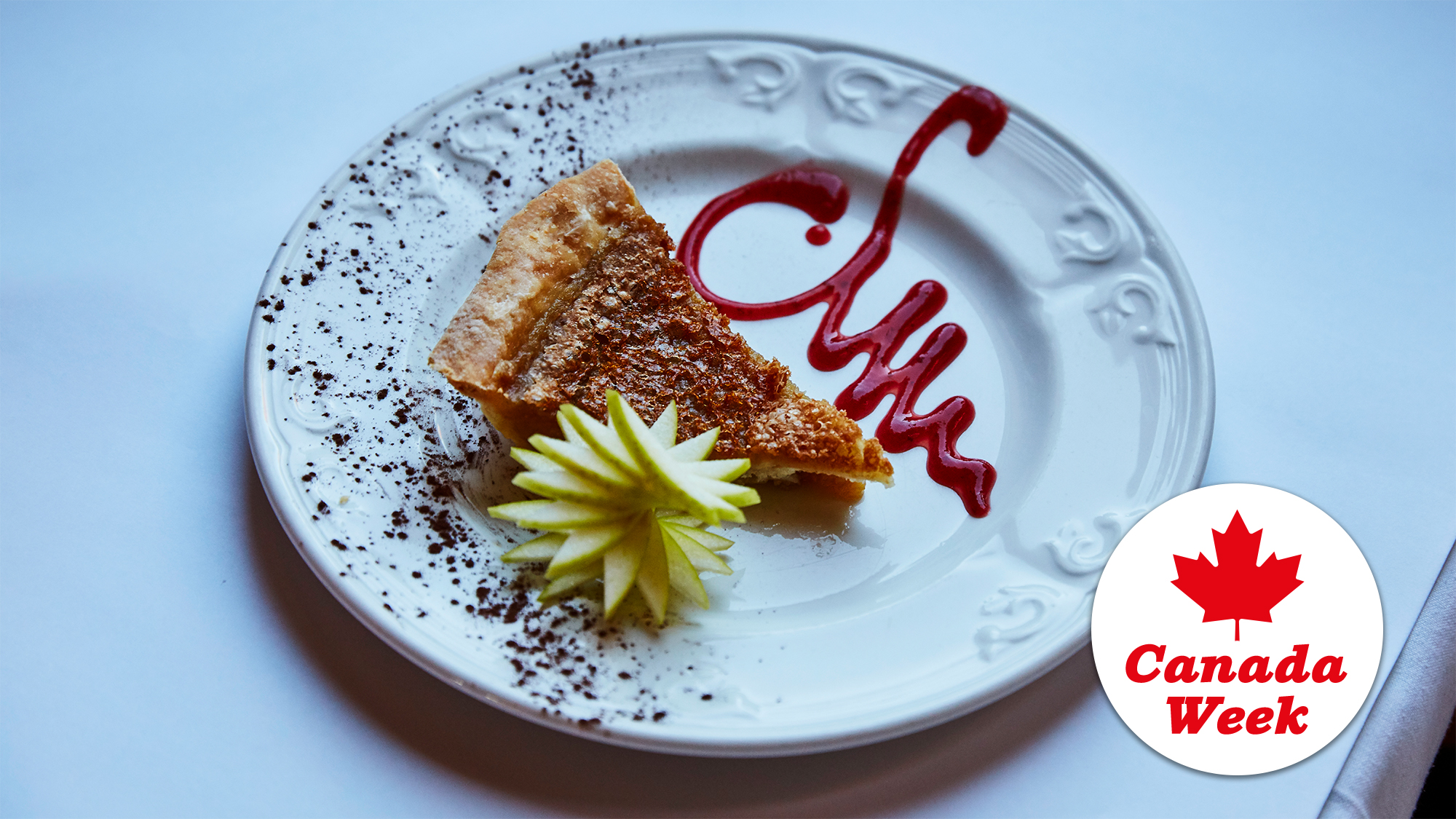Sweet Discovery: Tracing The Québécois Roots Of Sugar Pie
In honor of Canadian Thanksgiving, The Takeout is celebrating the nation's culinary contributions all week long. We hope you enjoy Canada Week.
The quirky blend of a down-to-earth North American attitude with French traditions has always fascinated me about Quebec. The province has an old-world sensibility flowing through it that sets it apart; you would never mistake it for anywhere else in the country. Quebecois food perfectly illustrates the area's mix of influences, from the classic poutine (North American fries covered in a very French gravy, plus cheese curds for good measure) to its meatball stew, which simmers meatballs seasoned with cinnamon and nutmeg in a broth flavored with onions. I've traveled through a lot of Quebec, from the ice wine vineyards of Montérégie to the historic boulevards of Quebec City and the venues of Montreal. But it wasn't until I visited the scenic terrain of the Gaspé Peninsula that I found my favorite Quebecois dish.
After the adrenaline rush of moose-tracking in the Chic Choc mountains (up close and personal with a 600-pound female!) I entered a tiny local diner with my tour group. I can't remember what the meal was—maybe because those details are overshadowed by the joyous memory of being served sugar pie for dessert. I remember that the slice arrived on a thin short crust topped with a thick and golden brown filling. It was a simple presentation, with the lacy edges of the plate as the only adornment. But as soon as I tasted the smooth, rich, buttery flavor, I realized it didn't need anything else.
Despite its name, tarte au sucre is not overly sweet. It's a sublime mixture of sugar and cream that thrilled my discerning sweet tooth. I'm that person who chooses restaurants based on the creativity of their dessert menus, so discovering sugar pie was no small thing for me: I proceeded to order it at every restaurant that I visited throughout the Gaspé. I found that some recipes use more cream so that the texture is thicker, some top the pie with crystalized maple syrup, but no matter the recipe variation, I enjoyed them all. The only presentation that came close to detracting from the dish was a double pie crust, which overshadowed the moisture of the filling. For anyone traveling in the region, Le Fournée des Sucreries de L' Érable in Montreal's Jean Talon Market is a particular standout for sugar pie.
"Sugar pie is an important tradition in our French Canadian cuisine," explained Serge Duval, the Maitre d' of Aux Anciens Canadiens, a Quebec City destination for traditional Quebecois dishes. "There are as many recipes as the people who make it, [and] it can differ from one town to the other." Wherever the celebration, sugar pie is a staple of holiday dinners throughout Quebec.
Sugar pie, like most Quebecois cuisine, is an adaptation of recipes that originated in northwest France, where most of Quebec's settlers came from. In 1789, the British conquered the French in Quebec, creating a food culture that would marry the two countries' influences with indigenous staples like corn. But it wasn't until I started researching that I realized that there are versions of this pie in the U.S. as well. Sugar pies are popular in Maine and across New England, and the Amish shoofly pie is similar (but a bit thicker). In Louisiana, where the French also brought their traditions, the pecan pie is another variation, one with the added texture of chopped nuts. The hallmark of the Quebecois version is the presence of maple syrup, which was originally used by early settlers due to its abundance; in modern recipes, it's more common to see brown sugar used as a sweetener, or a combination of the two. Try out Aux Anciens Canadiens' tarte au sucre recipe below for a traditional taste of Quebec.
Sugar Pie
Recipe courtesy of Restaurant Aux Anciens Canadiens
- 2 Eggs
- 1 1/2 cups brown sugar
- 1/2 cup heavy cream
- 1 teaspoon butter, softened
- 1/4 cup maple syrup
- Maple extract to taste
- 1 pie crust shell
Preheat the oven to 350 degrees Fahrenheit. Mix the first six ingredients in the order listed, then pour into the pie crust. Bake for about 40 minutes.
